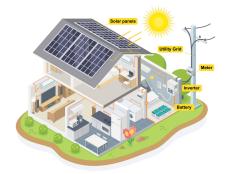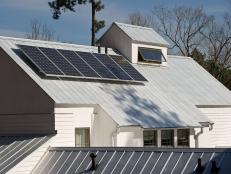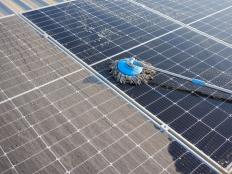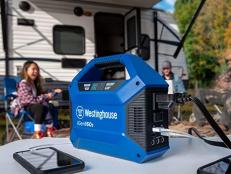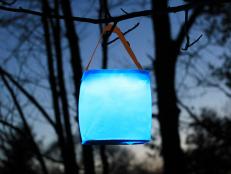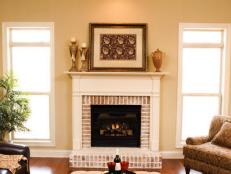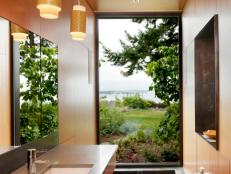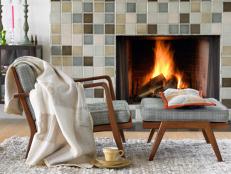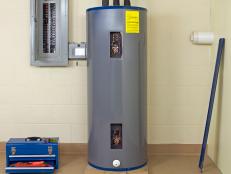Passive Solar Power Actively Saves Energy

Ryan McVay
For a more energy-efficient, comfortable home, consider simply using the sun. You can manipulate sunlight to provide ample lighting, heating and shading to minimize a home's energy needs, even without incorporating such technology as photovoltaic systems and solar water heaters. This design technique is known as passive solar design. Passive solar design has the potential to minimize, even eliminate, the need for mechanical heating and cooling, as well as for daytime lighting.
The traditional way of orienting a new home on a lot is based purely on appearance. The homeowners have to rely solely on the HVAC system to control the indoor environment. Passive solar design, on the other hand, uses the natural movement of heat and air to maximize solar heat gain in the winter and to minimize it in the summer. Although design principles vary by climate and location, the basic strategies remain the same:
Window selection. The easiest way to heat a home with solar energy is to simply let sunshine in through the windows. As sunlight passes through, it heats the home's surfaces, helping to keep the home warm. Since windows increase the likelihood of energy loss, it's important to consider window insulation properties, shading techniques and other strategies that keep heat where it's wanted most.
Site orientation. The best way to orient a home is with its long axis running east to west. With this orientation, the longest side of the home faces south. The south is the sunniest direction and hence the warmest, so orienting a building this way maximizes solar heat gain.
Landscaping. Landscaping is a great option for optimizing solar heat gain and shading. Landscaping can help shade the sides of a home to reduce solar heat gain during warmer months. Mature deciduous trees, which lose their leaves during the winter, will let warming sunlight through when it's colder out. Place trees on the south and east or west side.
Overhangs and awnings. Roof overhangs and window awnings perform a function similar to landscaping. When overhangs and awnings are properly sized, they shade windows in the summer and let in sunlight in the winter (when the sun is lower in the sky).
Natural cooling. When used correctly, outdoor air is a cost-effective way to reduce a home's cooling load. Cross-ventilation increases the amount of air flowing through rooms, and opening windows during a cool night allows heat to escape.
Although passive solar design techniques tend to be more expensive upfront, they can save homeowners money in the long term through lower energy bills. Homes that effectively integrate and use passive solar design are typically more comfortable for homeowners.






